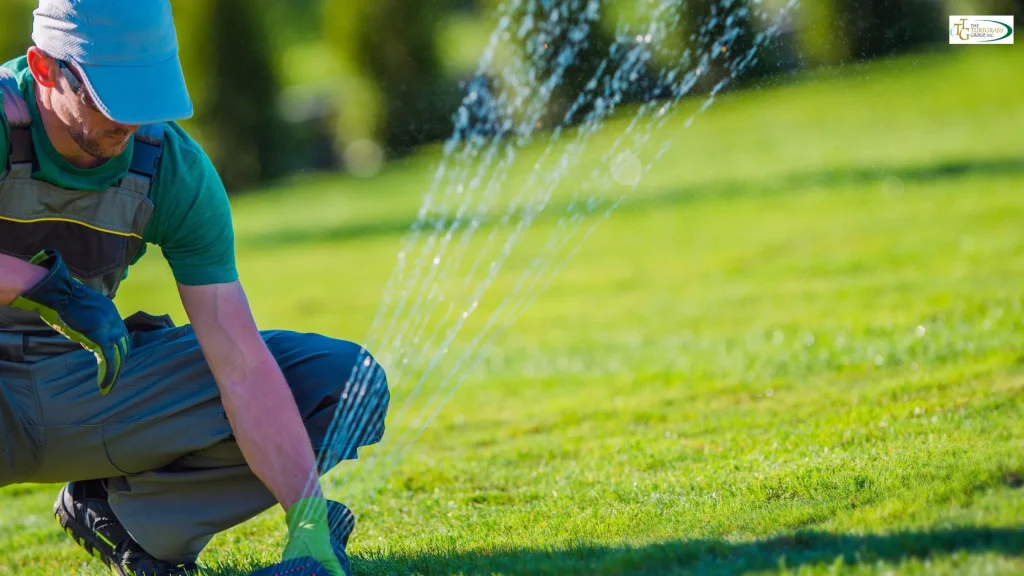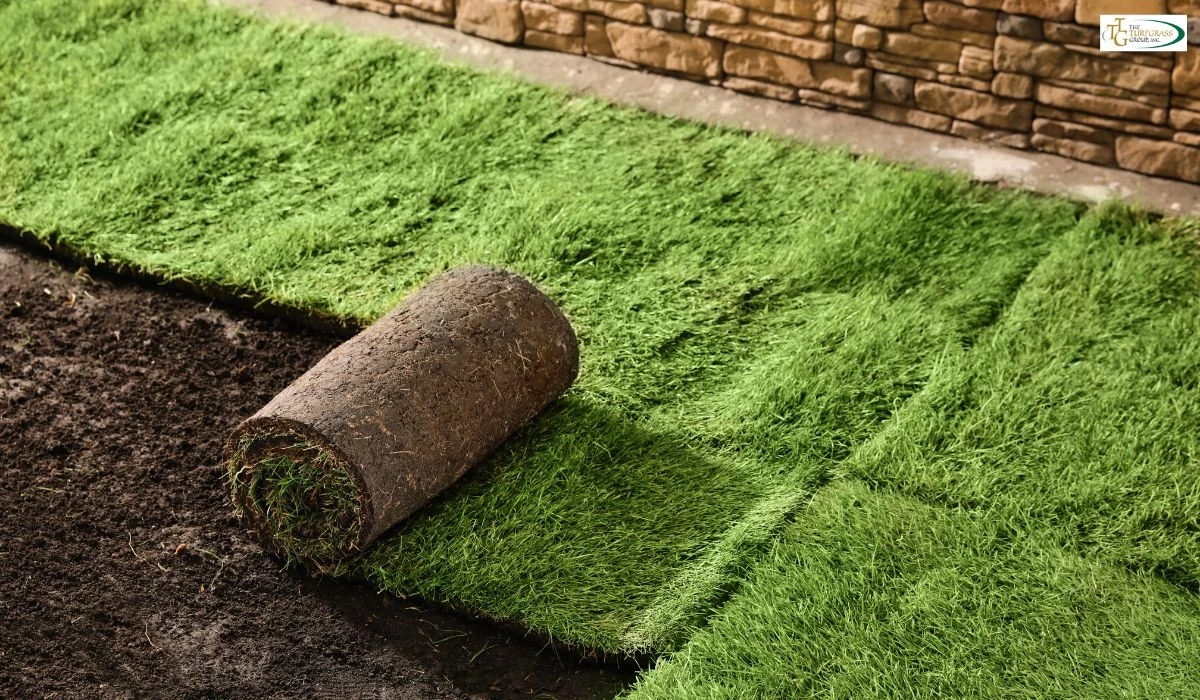
In a world that is gradually becoming more and more concerned about sustainability and environmental responsibility, our choices in landscaping have an important role to play in promoting eco-friendly practices.
Of these, Smart Drop Certified turfgrass varieties are perhaps the most practical and effective solutions in water conservation and sustainable landscaping.
In this article, we look into different aspects of certified TifTuf turfgrass, focusing on its advantages and contribution to water conservation.
This contributes to the production of greener and sustainable environments.
Importance of Water Conservation in Landscaping
Water is a limited resource, with the population’s growth, global climate change, and an unbridled consumption culture placing an increasing burden on its availability.
Landscaping is the largest user of water, particularly in urban and suburban environments, where traditional approaches to lawn and ornamental garden landscapes tend to waste irrigation water.
This is the challenge that homeowners, businesses, and municipalities are embracing sustainable landscaping practices to address.
Among these, the use of certified turfgrass varieties has emerged as a cornerstone strategy offering a balance between aesthetic appeal and resource efficiency.
What is Smart Drop Certified Turfgrass?

Smart Drop Certified turfgrass is a variety of grass that has been thoroughly tested and certified to be water-efficient, drought-tolerant, and environmentally friendly.
They are developed to thrive in local conditions while requiring minimal irrigation, fertilization, and maintenance.
Key Features of Smart Drop Certified Turfgrass
- Drought Resistance: Engineered to survive and remain lush during extended dry periods.
- Low Water Usage: Needs only up to 30-50% of the amount used by traditional grass.
- Soil Adaptability: This variety thrives on a variety of soils, which lessens the requirement for soil amendments.
- Resilience: Withstands heavy foot traffic, pests, and diseases with very little intervention.
- Aesthetic Appeal: It provides rich green colours and uniform growth patterns, giving a great curb appeal.
How Certified Turfgrass Supports Water Conservation
Water conservation is the trademark of Smart Drop Certified turfgrass.
These grass varieties enhance water-saving practices in the following ways:
- Reduced Irrigation Needs Certified turfgrass varieties are specifically bred to require less frequent watering. Deep root systems enable these grasses to access moisture from deeper soil layers, hence reducing dependence on surface irrigation. This helps conserve water besides minimizing runoff and soil erosion.
- Improved Soil Health These turfgrass varieties improve soil structure and organic matter content. Healthy soils will retain moisture more than soil that is not. There will be less frequent watering for supplemental irrigation.
- Compatible with Smart Irrigation Systems Smart Drop Certified turfgrasses are often compatible with innovative irrigation technologies, including drip irrigation and weather-based controllers. These systems optimize water delivery as the schedules are adjusted based on real-time weather data for efficient use of water.
- Natural Cooling Effect By keeping a healthy lawn with certified turfgrass, you can lower the urban heat island effect. More fabulous lawns need less water to maintain their health, and this helps contribute to total water savings.
Sustainable Landscaping with Certified Turfgrass
Sustainable landscaping is much more than just water conservation, but it also includes practices that preserve biodiversity, lower carbon footprints, and promote ecological balance. Smart Drop Certified turfgrass plays a crucial role in accomplishing these.
- Reduced Chemical Usage These turfgrass varieties require very minimal fertilizers and pesticides as they are naturally resistant to pests and diseases. This minimizes chemical runoff into water bodies, thus protecting aquatic ecosystems.
- Carbon Sequestration Healthy turfgrass absorbs carbon dioxide and gives off oxygen, thus enhancing air quality. Its dense root system also stores carbon in the soil, therefore mitigating climate change.
- Support of Native Flora and Fauna Certified turfgrass can be used in combination with native plants and wildflowers to create environmentally friendly landscapes that support local pollinators and wildlife.
- Better Erosion Control The deep root systems of certified turfgrass varieties stabilize the soil, preventing erosion and promoting water infiltration. This is particularly helpful in areas that experience heavy rainfall or wind erosion.
Steps to Transition to Smart Drop Certified Turfgrass
Transitioning to Smart Drop Certified turfgrass requires careful planning and execution. Here are the steps to ensure a successful transition:
- Assess Your Landscape Assess your existing lawn and soil conditions. Identify areas where certified turfgrass can replace water-intensive species.
- Choose the Right Variety Choose a certified turfgrass variety that is suitable for your climate, soil type, and intended use. Consult local suppliers or landscape professionals for guidance.
- Prepare the Soil Test your soil’s pH, nutrient levels, and drainage capacity. Make necessary amendments to create an optimal growing environment.
- Install and Maintain Install certified turfgrass based on best practices. Employ smart irrigation and apply sustainable maintenance for maximum benefit.
The Future of Water-Savvy Landscaping
With increasing consciousness around sustainability, the implementation of more eco-friendly and environmentally sensitive landscaping practices shall gain priority.
Smart Drop Certified turfgrass is sure to take the lead in converting lawns around the world toward water-sensitive, eco-responsive landscapes.
Choosing certified bermuda turfgrass means everyone is taking a step collectively toward preserving water, contributing to their ecological footprint and green, thriving landscapes to come for generations.
Conclusion
The road to sustainability landscaping starts with making conscious choices, and Smart Drop Certified turfgrass presents an excellent chance for transforming how we do green.
The key here is ensuring that water is conserved and that eco-friendly grass varieties are embraced for adoption.
In so doing, we respond to perhaps the most critical environmental need today: the management of responsible water.
In addition to saving water, certified turfgrass contributes more widely to a spectrum of ecological benefits: reduced chemical application, improved air and soil quality, and biodiversity.
In terms of the long-run benefits, the investment pays off, making certified turfgrass not only a more economical choice for the future but also an ethical one.
When awareness and access become the norm, we will witness a world in which all lawns, parks, and public spaces represent the intention of environmental stewardship.
Together, with better choices, we will pave the way to a greener planet in which sustainable landscaping practices are no longer the exception but the rule.
In conclusion, Smart Drop Certified turfgrass is more than just a landscaping choice; it is a symbol of progress toward a sustainable and environmentally responsible future.
It invites us all to be part of a more significant movement to conserve resources, combat climate change, and create healthier, greener spaces for ourselves and future generations. Let us choose wisely and act decisively to make our landscapes a testament to the lasting harmony between humanity and nature.
FAQ’s
What makes Smart Drop Certified turfgrass different from other grasses?
Smart Drop Certified turfgrass is engineered to conserve water and be resistant to drought. It requires significantly less irrigation, fertilizer, and maintenance compared to traditional grass types. These grasses also have a higher resistance to pests and diseases, which will make them a tremendous eco-friendly landscaping choice.
How much water will I save by using Smart Drop Certified turfgrass?
By adopting Smart Drop Certified turfgrass, you can reduce your water usage for lawn maintenance by up to 30-50%. These varieties have deep root systems that access moisture from lower soil levels, significantly lowering irrigation needs and conserving water.
Is Smart Drop Certified turfgrass suitable for all climates?
Yes, Smart Drop Certified turf varieties are designed and bred to function in and adapt to variable climates and soil conditions. But variety selection should occur within a series of the varieties best suited to your region or climate conditions. Consult local suppliers/landscape professionals as appropriate.
What’s the recommended maintenance for Smart Drop Certified turfgrass?
These turfgrass varieties require fewer maintenance needs compared to traditional lawn grass. They can have regular mowing, occasionally fertilizing, and using smart irrigation to keep the grass healthy and looking great. Additionally, this natural resilience lowers the dependence on pesticides or other chemicals.
Does Smart Drop Certified turfgrass work in high-traffic areas, such as a sports field?
Absolutely. Water-efficient turfgrass is quite resistant to high foot traffic, making it very suitable for sports fields, recreational parks, and other public open spaces. Its structure is quite strong, and the water requirements are low, which would make it cost-effective and a sustainable solution for such applications.
Are there financial incentives or rebates for using water-efficient turfgrass?
Many municipalities and water districts provide rebates or incentives for using water-efficient landscaping, such as Smart Drop Certified turfgrass. Contact your local government or water provider to determine what programs they have in place to promote sustainable landscaping.
Are there any environmental benefits beyond water conservation?
Yes, Smart Drop Certified Turfgrass offers a lot of environmental benefits. For example, it reduces the demand for chemical fertilizers and pesticides and prevents local water sources from contamination. Its dense root system prevents soil erosion and contributes to improving soil health. In addition, it contributes to the reduction of the urban heat island effect through the natural cooling effect that occurs in urban environments.